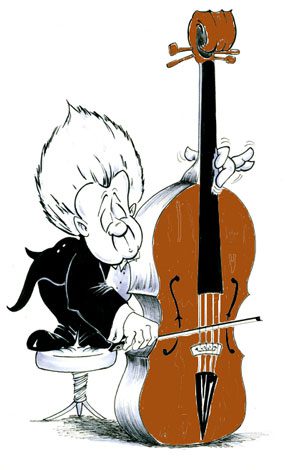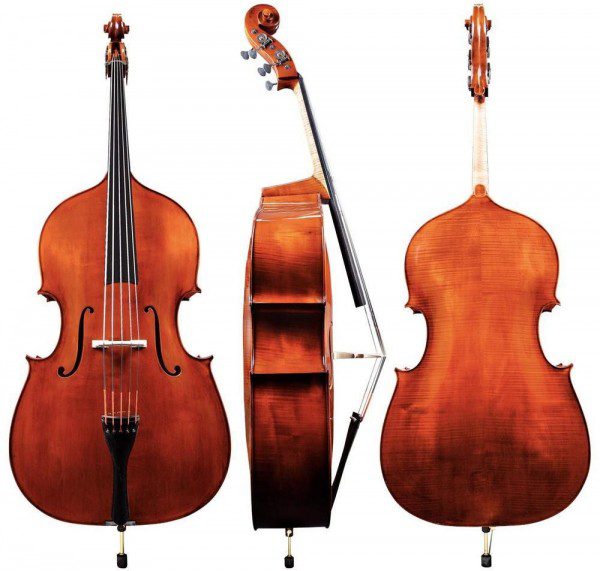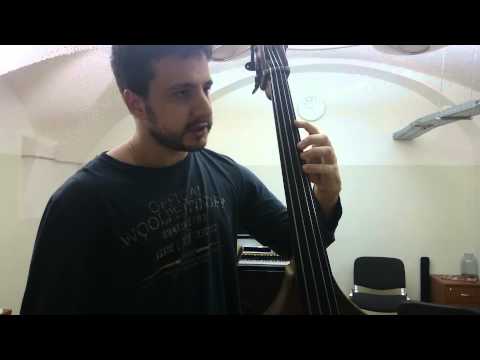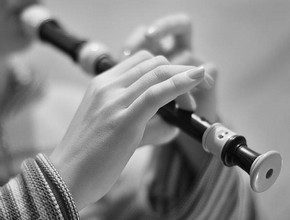
Double Bass Basics
There are many musical instruments, and the string-bow group is one of the most expressive, euphonious and flexible. This group features such an unusual and relatively young instrument as the double bass. It is not as popular as, for example, the violin, but it is no less interesting. In skillful hands, despite the low register, you can get a rather melodious and beautiful sound.

The first step
So, where to start when first getting acquainted with the instrument? The double bass is quite bulky, so it is played standing or sitting on a very high chair, so first of all it is necessary to adjust its height by changing the level of the spire. In order to make it comfortable to play the double bass, the headstock is placed no lower than the eyebrows and no higher than the level of the forehead. In this case, the bow, lying in a relaxed hand, should be approximately in the middle, between the stand and the end of the fingerboard. This way you can achieve a comfortable playing height for the double bass.
But this is only half the battle, because a lot also depends on the correct body position when playing the double bass. If you stand behind the double bass incorrectly, a lot of inconveniences may arise: the instrument may constantly fall, difficulties will appear when playing on the bet and rapid fatigue. Therefore, special attention must be paid to the production. Place the double bass so that its right rear edge of the shell rests against the groin area, the left leg should be behind the double bass, and the right leg should be moved to the side. You can fine-tune your body position based on your sensations. The double bass must be stable, then you can easily reach both the lower notes on the fretboard and the bet.

Hand position
When playing the double bass, you also need to pay attention to your hands. After all, only with their correct position will it be possible to fully reveal all the capabilities of the instrument, achieve a smooth and clear sound and at the same time play for a long time, without much fatigue. So, the right hand should be approximately perpendicular to the bar, the elbow should not be pressed to the body – it should be approximately at shoulder level. The right arm should not be pinched or bent too much, but it should not be straightened unnaturally either. The arm should be held freely and relaxed to maintain flexibility at the elbow.
The right hand does not need to be pinched or bent too much
Finger positions and positions
In terms of fingering, there are both three-finger and four-finger systems, however, due to the wide arrangement of notes in both systems, low positions are played with three fingers. So, the index finger, ring finger and little finger are used. The middle finger acts as a support for the ring and little fingers. In this case, the index finger is called the first finger, the ring finger is called the second, and the little finger is called the third.
Since the double bass, like other stringed instruments, has no frets, the neck is conventionally divided into positions, you have to achieve a clear sound through long and persistent exercises in order to “put” the desired position into your fingers, while your hearing is also actively used. Therefore, first of all, training should begin with studying the positions and scales in these positions.
The very first position on the neck of the double bass is the half position, however, due to the fact that it is quite difficult to press the strings in it, it is not recommended to start with it, so training begins from the first position. In this position you can play the G major scale. It’s best to start with a scale of one octave. The fingering will be as follows:
![]()
Thus, the note G is played with the second finger, then the open A string is played, then the note B is played with the first finger, and so on. Having mastered the scale, you can proceed to other, more complex exercises.

Playing with a bow
The double bass is a string-bowed instrument, therefore, it goes without saying that a bow is used when playing it. You need to hold it correctly to get a good sound. There are two types of bow – with a high block and a low one. Let’s look at how to hold a bow with a high last. To begin, you need to place the bow in your palm so that the back of the last rests on your palm, and the adjusting lever passes between your thumb and forefinger.
The thumb rests on top of the block, at a slight angle, the index finger supports the cane from below, they are slightly bent. The little finger rests on the bottom of the block, not reaching the hair; it is also slightly bent. Thus, by straightening or bending your fingers, you can change the position of the bow in your palm.
The bow hair should not lie flat, but at a slight angle, and should be approximately parallel. You need to keep an eye on this, otherwise the sound will turn out dirty, creaky, but in reality the double bass is supposed to sound soft, velvety, rich.

Finger play
In addition to the technique of playing with a bow, there is also a method of playing with the fingers. This technique is sometimes used in classical music and very often in jazz or blues. In order to play with fingers or pizzicato, the thumb needs to be rested on the fingerboard rest, then there will be support for the rest of the fingers. You need to play with your fingers, hitting the string at a slight angle.
Taking into account all of the above, you can successfully take your first steps in mastering the instrument. But this is only a small part of the information you need to fully learn to play, since the double bass is complex and difficult to master. But if you have patience and work hard, you will certainly succeed. Go for it!


Watch this video on YouTube




